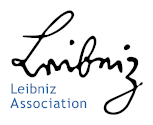- The Institute
- Research
- Dictatorships in the 20th Century
- Democracies and their Historical Self-Perceptions
- Transformations in Most Recent History
- International and Transnational Relations
- Edited Source Collections
- Dissertation Projects
- Completed Projects
- Dokumentation Obersalzberg
- Center for Holocaust Studies
- Berlin Center for Cold War Studies
- Publications
- Vierteljahrshefte
- The Archives
- Library
- Center for Holocaust Studies
- News
- Dates
- Press
- Recent Publications
- News from the Institute
- Topics
- Munich 1972
- Confronting Decline
- Feminist, Pacifist, Provocateur
- Der Mauerbau als Audiowalk
- Digital Contemporary History
- Transportation in Germany
- Envisaged Futures at the End of the Cold War
- From the Reichsbank to the Bundesbank
- German Federal Chancellery
- History of Sustainabilities: Discourses and Practices since the 1970s
- Changing Work
- Democratic Culture and the Nazi Past
- The History of the Treuhandanstalt
- Foreign Policy Documentation (AAPD)
- Dokumentation Obersalzberg
- Hitler, Mein Kampf. A Critical Edition
- "Man hört, man spricht"
- Dictatorships in the 20th Century
- Democracies and their Historical Self-Perceptions
- Transformations in Most Recent History
- International and Transnational Relations
- Edited Source Collections
- Dissertation Projects
- Completed Projects
- Dokumentation Obersalzberg
- Center for Holocaust Studies
- Berlin Center for Cold War Studies
Visits to Nazi Concentration Camps between 1933 and 1945
Abgeschlossenes ProjektProjektinhalt:
Visits to Nazi concentration camps are frequently described in the reports of survivors and in historical news articles. The groups of visitors included a wide range of actors including domestic and international journalists, politicians, artists, and aid agencies.
This dissertation investigates the wide range of visits and their specific characteristics as well as the motivations for the visits across the period between 1933 and 1945, and looks into the consequences for prisoners, the SS, and the visitors themselves. The study particularly analyzes the visits as a staging and self-portrayal of the Nazi regime, and looks into the question of what the visits meant for the public perception of the camps. The project focuses here on visits to the camps that were erected before the war began, but uses examples from Auschwitz as well. Following a comparative approach, the project investigates the commonalities and differences between the camps and how they were “sold” in the domestic and international public eye.
The sources include the reports of former prisoners, newspaper archives, contemporary reports of visitor groups on their visits, SS documents, and documents from the post-war legal prosecution of Nazi crimes.
Publications within the project
Kerstin Schwenke
Öffentlichkeit und Inszenierung.
Publications of the Center for Holocaust Studies
Berlin 2021






